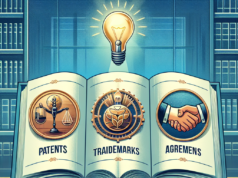
When a copyright is established in one country, it is only valid within the country where it was created and countries which are under the same treaty. One of the earliest copyright conventions to allow copyright protection among many different nations was the Berne Convention for the Protection of Literary and Artistic Works, created in 1887. The other principal copyright convention is the Universal Copyright Convention of Geneva.
Many works which have come from other source countries were not recognized by the United States until the Uruguay Round Agreements Act (URAA) of 1994. This Act was passed during the Uruguay Round General Agreement on Tariffs and Trade (GATT), which included an agreement on the Trade-Related Aspects of Intellectual Property (TRIPS).
As a result of this Convention, United States copyright law was amended slightly, and in turn, many creative works were restored to copyright status in 1996. As a result, copyrighting the works required that the owners of the copyrights notify those that rely on their former public domain status. These people that rely on the public domain status of works are called Reliance Parties. If the owner planned to enforce their rights after the copyrighting of their work, the Reliance Parties would be forced to cease using the work.
One of the means of notification that was used in 1996 was by filing with the Copyright Office a Notice of Intent to Enforce (NIE) a Restored Copyright. If a NIE was not filed with the U.S. Copyright Office, the copyrighting of the work was not enforced and the Reliance Parties were legally able to continue their use of the public domain work.


























